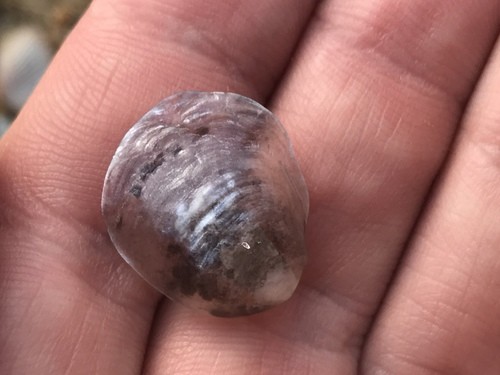Common jingle shell
A species of Jingle shells Scientific name : Anomia simplex Genus : Jingle shells
Common jingle shell, A species of Jingle shells
Botanical name: Anomia simplex
Genus: Jingle shells
Content
Description
 Photo By ruggedbynature , used under ALL RIGHTS RESERVED /Cropped and compressed from original
Photo By ruggedbynature , used under ALL RIGHTS RESERVED /Cropped and compressed from original Description
Anomia simplex is a typical species of bivalve mollusk in the family of Anomiidae, similar to blue mussels, American oysters, and bay scallops. The family of Anomiidae ranges from salt water clams to bivalve mollusks, which contains about 7 genera including Anomia simplex. Anomiids are most closely recognized for their extremely thin, often translucent, paper-like shells which can often be used in the industry to help manufacture glue, chalk, paints, and other materials. Despite the relatively thin and translucent shell, these shells are very strong and withstand many environmental pressures on hard substrates. Anomia simplex have often been referred to as “common jingle shells,” “gold shells,” and even “Mermaid’s Toenails.” The origin of the nickname “common jingle shell” refers to the sound a collection or grouping of these shells will make when carried in a container and mixed around, producing a “jingle.” Also, when several shells are strung together on a coast, they can produce their characteristic chime effect through wave action. Their relative abundance across various coastal regions suggests they are a common shell to come across, and therefore suggests the name of “common jingle shell” In terms of physical structure, Anomia simplex can reach up to 1-3 inches and are noted for dissimilarity between the upper and lower valves of their bivalve conformation. The lower valve of Anomia simplex remains an off-white color, whereas the upper valve of these shells can range from shiny lemon yellow, golden, brown, silvery black, and pale buff. The characteristic iridescence of these common bivalve mollusks is retained even well after death. Additionally, common jingle shells are very thin and their shells can range from roughly circular to broadly oval-shaped. Overall, the shell is often translucent, smooth, and displays various growth lines which can mirror the substrate in which they lived on.
* Disclaimer: The judgment on toxicity and danger is for reference only. We DO NOT GUARANTEE any accuracy of such judgment. Therefore, you SHALL NOT rely on such judgment. It is IMPORTANT TO SEEK PROFESSIONAL ADVICE in advance when necessary.
Scientific Classification
Phylum
Molluscs Class
Bivalve shell Order
Scallops and allies Family
Anomiids Genus
Jingle shells Species
Common jingle shell